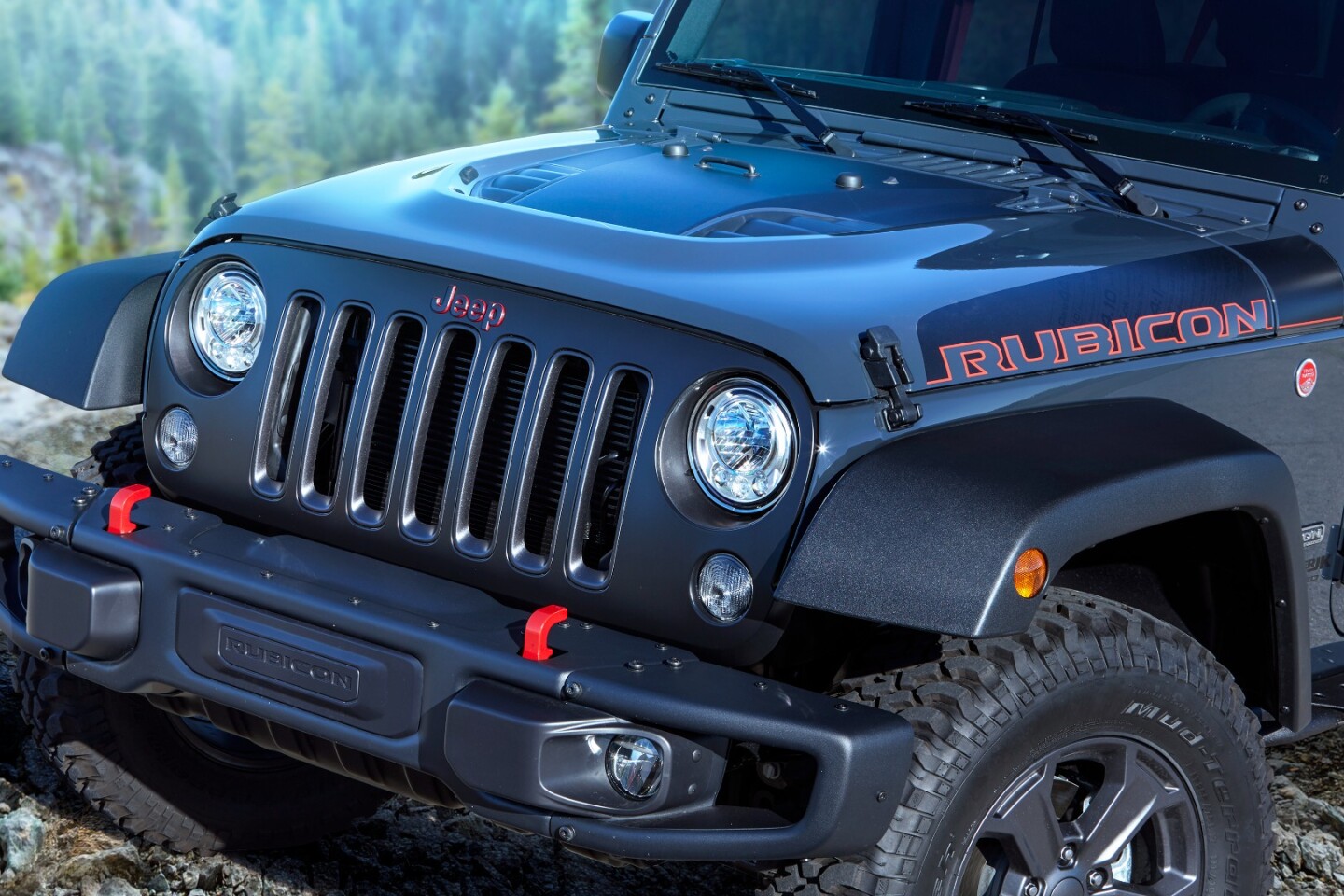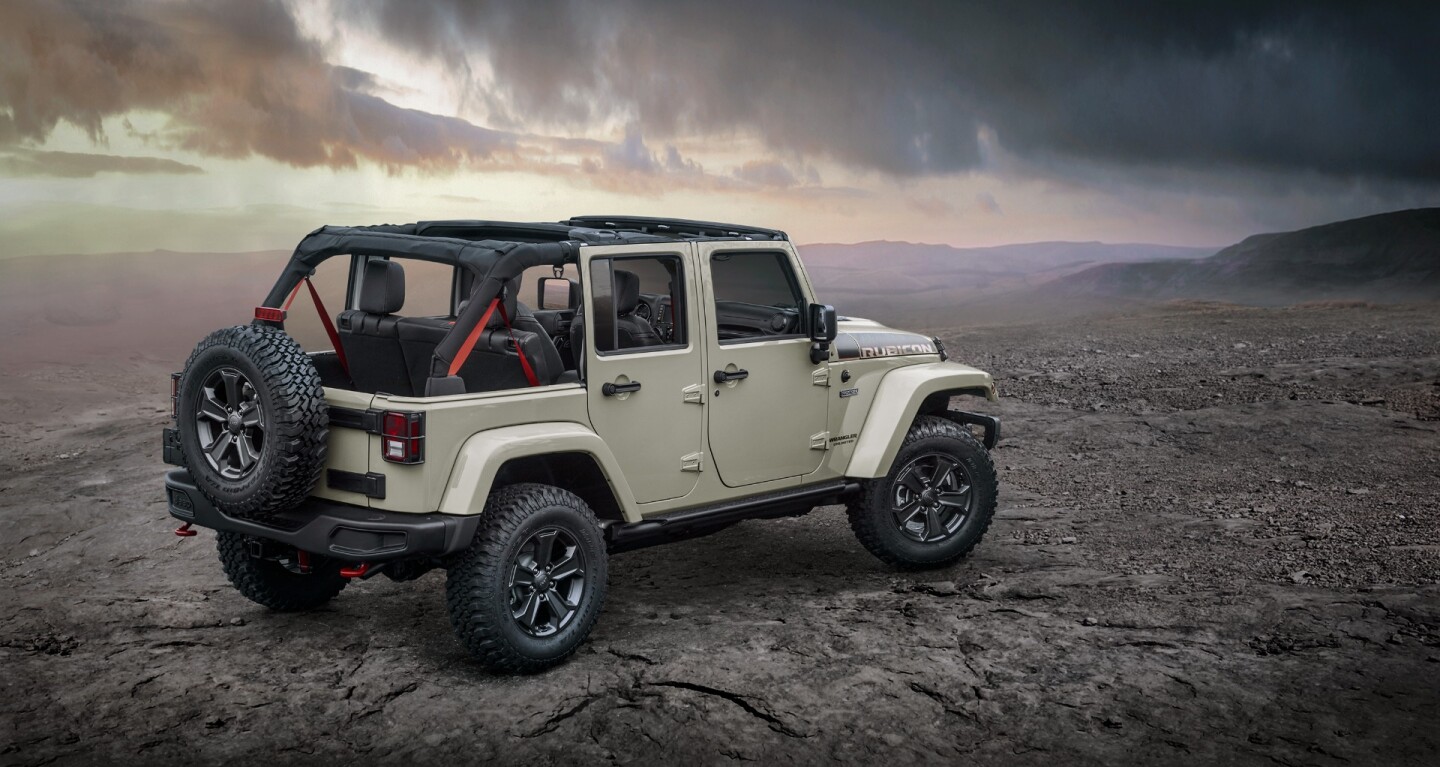Wrangler 2018 2.0 Turbo
The flagship of the Jeep brand, the Wrangler is one of the most easily-recognized and cultishly followed vehicles in America. When Jeep announces a new-generation of the Wrangler, it's an event as momentous as Halley's Comet: both rare and much-anticipated.
The 2018 Jeep Wrangler will enter showrooms in the United States in January 2018. Jeep teased a few images of the new Wrangler in early November, but has otherwise been careful to only leak enough details to get the rumor mills spinning. Finally unveiled at the Los Angeles Auto Show, the new JL series Wrangler is now fully spec'd out.
Highlights to the new-gen Jeep include a better turning radius, stronger crawl ratio, a new turbocharged four-cylinder engine option, some modern interior upgrades, added technology for infotainment and safety, and upcoming diesel engine and hybrid-electric powertrain options.

C.C. Weiss/New Atlas
As old school as the Wrangler might be, being the "Jeep" most people refer to when they use the brand's name, this newest edition marks only its fourth generation since its consumer market debut in the 1980s. Since then, design details have changed, but the overall appearance of the Wrangler hasn't morphed too far from the original. Technology has improved the Wrangler's capabilities and performance, but the tradition of being as rough-and-tumble as they come and as iconic to off-roading as it can be has remained intact.
On the exterior, the new Wrangler retains the well-recognized slotted grille and round headlamps that have defined this SUV since it first appeared as a military vehicle in the 1940s. Trapezoidal fenders and a short wheelbase on a square body also remain. The legendary capability to remove doors, lower the windshield, and remove the top are also part and parcel in the new-generation Wrangler. As are heavy bumpers, ready-for-action tires, and a tailgate-mounted full-sized spare tire.
The dimensions of the new 2018 Wrangler JL are a bit larger than the outgoing Jeep, with an overall length of 166.8 inches (4,237mm) for the two-door model, versus 164.3 inches for the previous gen. Width and height remain almost the same, though, at 73.8 inches (1,875 mm) and 73.6 inches (1,868.4 mm) respectively, compared to the 73.7 and 72.5 of the JK. The Wrangler's wheelbase will extend in the new version by about an inch and a half at 96.8 inches (2,460) from the current-gen's 95.4 inches. The four-door models have a similar growth in size as well.

Fiat-Chrysler
A big surprise might come when noting the overhangs on the new Wrangler. Despite the modest lengthening of the SUV, overhangs increase significantly with the 2018 model having 29.2 and 40.8 inches front and rear (741.6, 1,036.3 mm). That's about 2.5 and 10 inches longer than the outgoing Wrangler's 26.7 and 30.6 inch overhangs.
These changes in dimensions mean that the new Jeep would have a very different turning dynamic if linkages remained the same. Jeep changed those, however, giving the new steering ratio a boost from 16.7:1 to 17.4:1, which kept the turning radius about the same at 34.5 feet (curb-to-curb) versus 34.6 – roughly 10.5 meters. Turns increased a tad from 3.5 lock-to-lock to 3.6.
Another benefit of the 2018 Jeep Wrangler's redesign is in approach, breakover, and departure angles. The new generation has a 41.4-degree approach angle on its base model and a 44-degree angle on its Rubicon edition. All about two degrees better than the outgoing model's approach. Breakover and departure angles see improvements of about the same two degrees, starting at 25 degrees for the base and 27.8 for the Rubicon and 35.9 for the base and 37 for the Rubicon, respectively. Ground clearance also improves dramatically, jumping from 8.3 in the base model current-generation Wrangler to 9.7 and up to 10.8 in the new-generation base and Rubicon.
Jeep also says that it's improved the new 2018 Wrangler's weight by using aluminum on the hood and doors, and magnesium alloy on the tailgate. These weight losses, however, seem to be offset by other changes as the curb weight for the new-generation JL is a few hundred pounds heavier than the equivalent model in the outgoing JK. The 2017 Wrangler Sport weighs in at about 3,760 pounds (1,403 kg) whereas the new 2018 Wrangler Sport in its base configuration weighs about 3,955 pounds (1,794 kg). It's the Rubicon model that seems to benefit the most from these weight-saving measures, having just a handful of pounds added (4,145 current versus 4,129 outgoing).

Fiat-Chrysler
Also heavily anticipated for the 2018 new-generation Wrangler are engine and powertrain options. Everything is improved here, starting from the base model V6 to a newly-added turbocharged four-cylinder. Jeep promises that a 3.0-liter diesel and a hybrid-electric option are also coming, but has not yet released specifications for those. Most assume that the hybrid won't be around until 2019 while the diesel will be introduced sometime mid-year in 2018, having only recently received US government approval.
The 2018 Jeep Wrangler will continue with the 3.6-liter Pentastar V6 it's been using for years, but that engine sees several upgrades commensurate with what it's seen in other Fiat-Chrysler models it's used in. For reference, engine displacement and outputs remain unchanged from 2017 at 285 horsepower (209 kW) and 260 pound-feet (353 Nm) with RPM peaks for those outputs also staying the same (6,400 and 4,800 respectively). The greatest changes are a lower compression ratio, down to 10.2:1 from 11.3:1, and a resulting lower oil and coolant requirement (down 1 liter for oil, 3 liters for coolant), reducing weight. Added to the upgraded 3.6L is engine stop-start for improved efficiency, now rated at 17 mpg city, 23 mpg highway, 19 mpg combined (13.8/10.2/12.4 l/100km) for the standard transmission and 18/23/20 mpg (13.1/10.2/11/8 l/100km) for the automatic transmission-equipped model. This engine is now built in Saltillo, Coahuila, Mexico.
Added for the 2018 Jeep Wrangler in the new JL platform is a 2.0-liter turbocharged four-cylinder. This engine outputs 270 horsepower (200 kW) and 295 lb-ft (400 Nm) at lower RPM (5,250/3,000) than the V6. This means that the turbo-four will have about the same output as the V6, but deliver it faster and with better torque to boot. Off-roaders understand why that makes a big difference as torque is what it's all about. Fuel efficiency numbers aren't released yet, but this little engine has the same towing capacity as does the V6 and will use the same transmissions. It's a part of the same engine family developed by Ferrari for Alfa Romeo, and will be built in Chrysler's Trenton, Michigan plant with overflow coming from Termoli, Italy.

Fiat-Chrysler
The 2018 Jeep's transmissions are an eight-speed automatic, which has been seen in many Chrysler-Jeep vehicles in recent years, and a six-speed manual transmission similar to that offered in previous-generation Wrangler models. Both have improved gearing at the lower end to add more torque than ever before. The automatic, which is standard in the I4-equipped Wrangler and optional on the V6, has a first-gear ratio of 4.71 and a second-gear of 3.13. The manual trans has a 5.13 and 2.63 first and second gear ratio. Those are both about a point higher than the first and second gear ratios of the outgoing model's transmissions.
Transfer case ratios remain almost identical from the outgoing to the new-gen, with crawl ratios of 2.72 to 4.1 from base model Sport to legendary Rubicon. Front and rear axles also remain the same Dana 30/35 and Dana 44 offerings from the current-generation, but with slightly different ratios (3.45 vs old-gen 3.21) in the base model.
The chassis for the 2018 Wrangler remains body-on-frame, of course, but the front axle moves from a live axle to a solid axle configuration, keeping the sway-bar disconnect system as standard equipment for the Rubicon. Shock absorption depends upon the package and wheel size, but remains equivalent to what was offered in the outgoing 2017 Wrangler.

Fiat-Chrysler
Braking in the 2018 Wrangler gets more robust, though, with rotors up front changing to 12.9x.94 inch (330x24 mm) vented rotors on the Sport model and 12.9x1.1 (330x28mm) on the Sahara and Rubicon models. Calipers are now 1.88-in (48mm) twin-pistons on the Sport and 2-inch (51 mm) twin-piston on the Sahara and Rubicon. Rear rotors and calipers are 12.9x.47-inch (328x12 mm) rotors on the Sport and 13.4x.55 (342x13 mm) on the Sahara and Rubicon. Calipers are 1.77-inch (45mm) and 1.88-inch (48mm) on those models as well. Stopping power is about the same, with larger rotors and slightly smaller calipers for the new-generation Jeep compared to the outgoing models.
On the inside of the new 2018 Jeep Wrangler, we can see use of the newest-generation Uconnect infotainment, remedying a chief complaint we've had with Wrangler models in the past. Also added are creature comforts like a usable arm rest between the front seats, more head and leg room, and an easier-to-use soft top. The soft top now uses plastic rails that snap into place on the roll bars, eliminating the yoga-inspired engineering required for installation of the soft tops of old. The new roll cage's profile and the soft top's installation method mean less wind buffeting at speed, Jeep engineers say. Jeep also labeled hinges and release points for doors, windscreen, etc. with the tool required to remove them (tools come as standard equipment), simplifying the learning curve.
The 2018 Jeep Wrangler was revealed at the Los Angeles Auto Show, and is expected to enter showrooms in January of 2018. Fiat-Chrysler has promised more information about the new Wrangler before it hits the streets publicly, as well as estimated release dates for the diesel and hybrid powertrains, along with their specifications.
Source: Fiat-Chrysler
Source: https://newatlas.com/2018-jeep-wrangler-la/52405/

0 Komentar